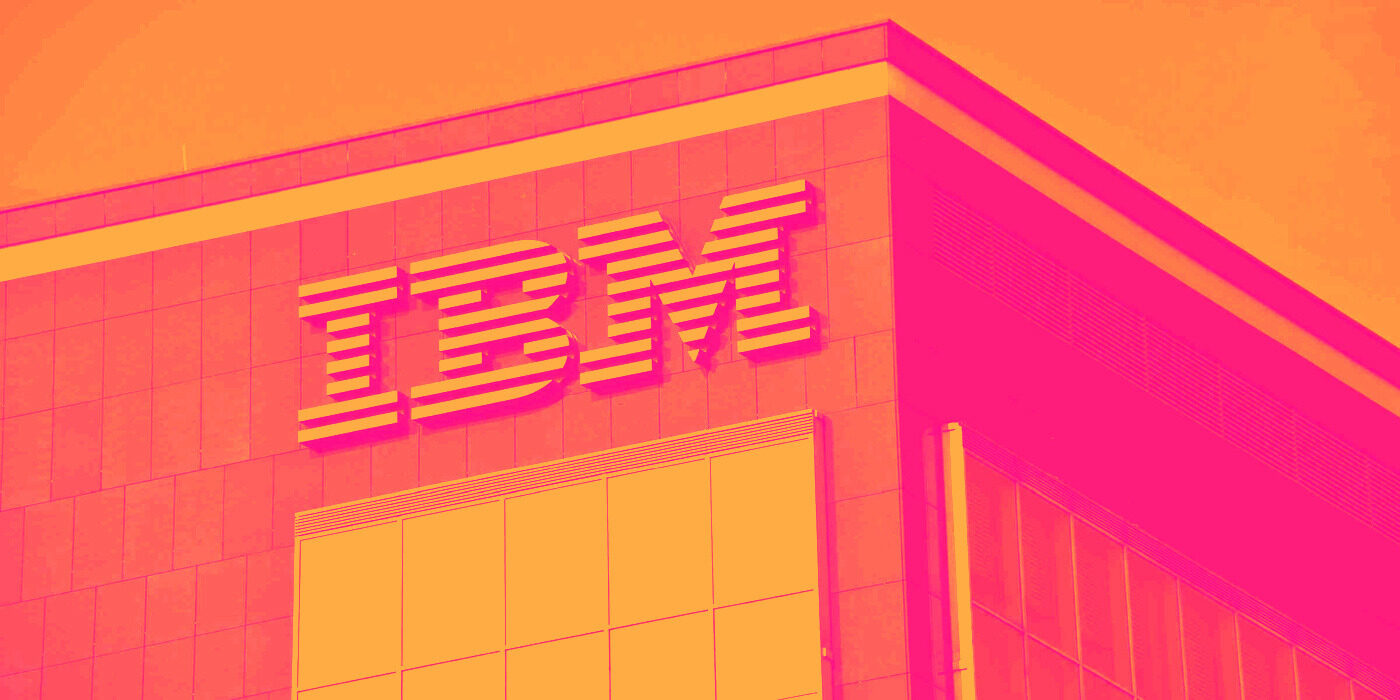
Technology and consulting giant IBM (NYSE: IBM) reported revenue ahead of Wall Street’s expectations in Q3 CY2025, with sales up 9.1% year on year to $16.33 billion. Its non-GAAP profit of $2.65 per share was 8.3% above analysts’ consensus estimates.
Is now the time to buy IBM? Find out by accessing our full research report, it’s free for active Edge members.
IBM (IBM) Q3 CY2025 Highlights:
- Revenue: $16.33 billion vs analyst estimates of $16.1 billion (9.1% year-on-year growth, 1.4% beat)
- Adjusted EPS: $2.65 vs analyst estimates of $2.45 (8.3% beat)
- Adjusted EBITDA: $4.6 billion vs analyst estimates of $4.10 billion (28.2% margin, 12.2% beat)
- Full-year guidance: IBM expects “more than” 5% revenue growth (up from “at least" 5% previously); free cash flow of $14 billion for the full year, up from a $13.5 billion prior)
- Operating Margin: 14.9%, up from 12.5% in the same quarter last year
- Free Cash Flow Margin: 17.2%, up from 13.8% in the same quarter last year
- Market Capitalization: $262.7 billion
"This quarter we accelerated performance across all of our segments, and again exceeded expectations for revenue, profit and free cash flow. Clients globally continue to leverage our technology and domain expertise to drive productivity in their operations and deliver real business value with AI. Our AI book of business now stands at more than $9.5 billion," said Arvind Krishna, IBM chairman, president and chief executive officer.
Company Overview
With a corporate history spanning over a century and once known for its iconic mainframe computers, IBM (NYSE: IBM) provides hybrid cloud computing platforms, AI solutions, consulting services, and enterprise infrastructure to help businesses modernize their operations.
Revenue Growth
A company’s long-term sales performance can indicate its overall quality. Even a bad business can shine for one or two quarters, but a top-tier one grows for years.
With $65.4 billion in revenue over the past 12 months, IBM is a behemoth in the business services sector and benefits from economies of scale, giving it an edge in distribution. This also enables it to gain more leverage on its fixed costs than smaller competitors and the flexibility to offer lower prices. However, its scale is a double-edged sword because it’s challenging to maintain high growth rates when you’ve already captured a large portion of the addressable market. To accelerate sales, IBM likely needs to optimize its pricing or lean into new offerings and international expansion.
As you can see below, IBM’s 1.3% annualized revenue growth over the last five years was sluggish. This shows it failed to generate demand in any major way and is a rough starting point for our analysis.
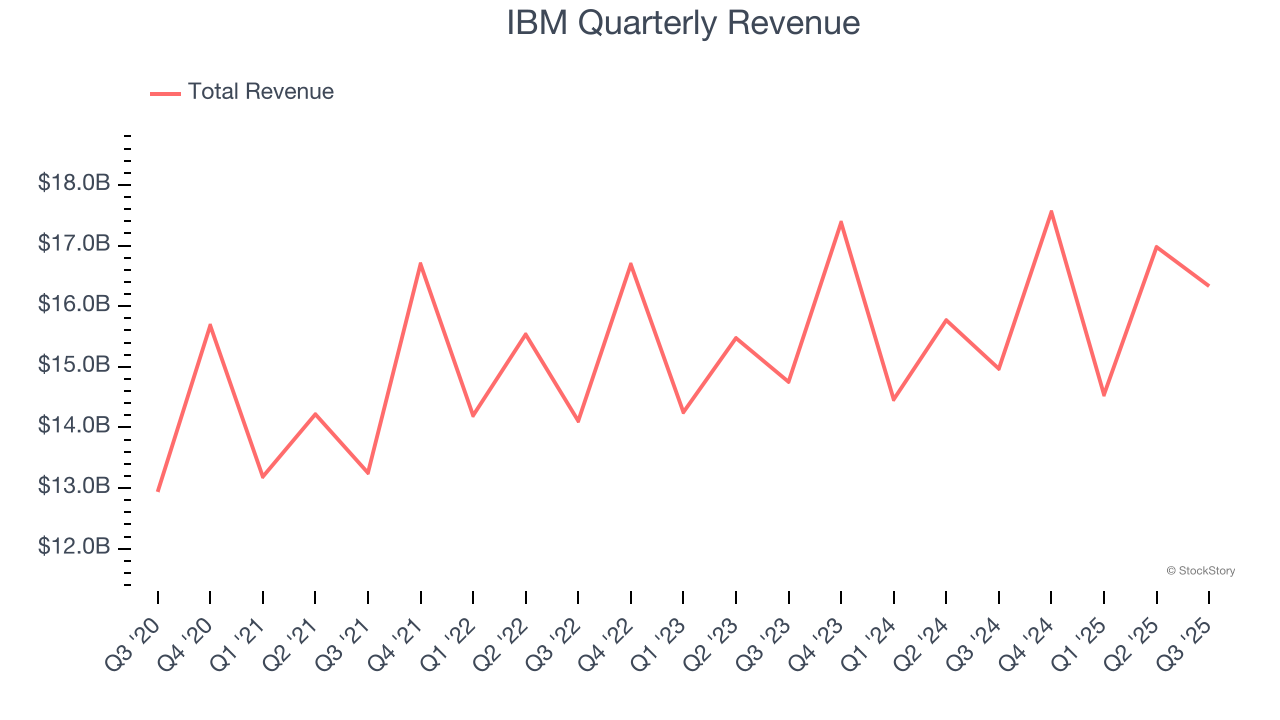
We at StockStory place the most emphasis on long-term growth, but within business services, a half-decade historical view may miss recent innovations or disruptive industry trends. IBM’s annualized revenue growth of 3.4% over the last two years is above its five-year trend, but we were still disappointed by the results. 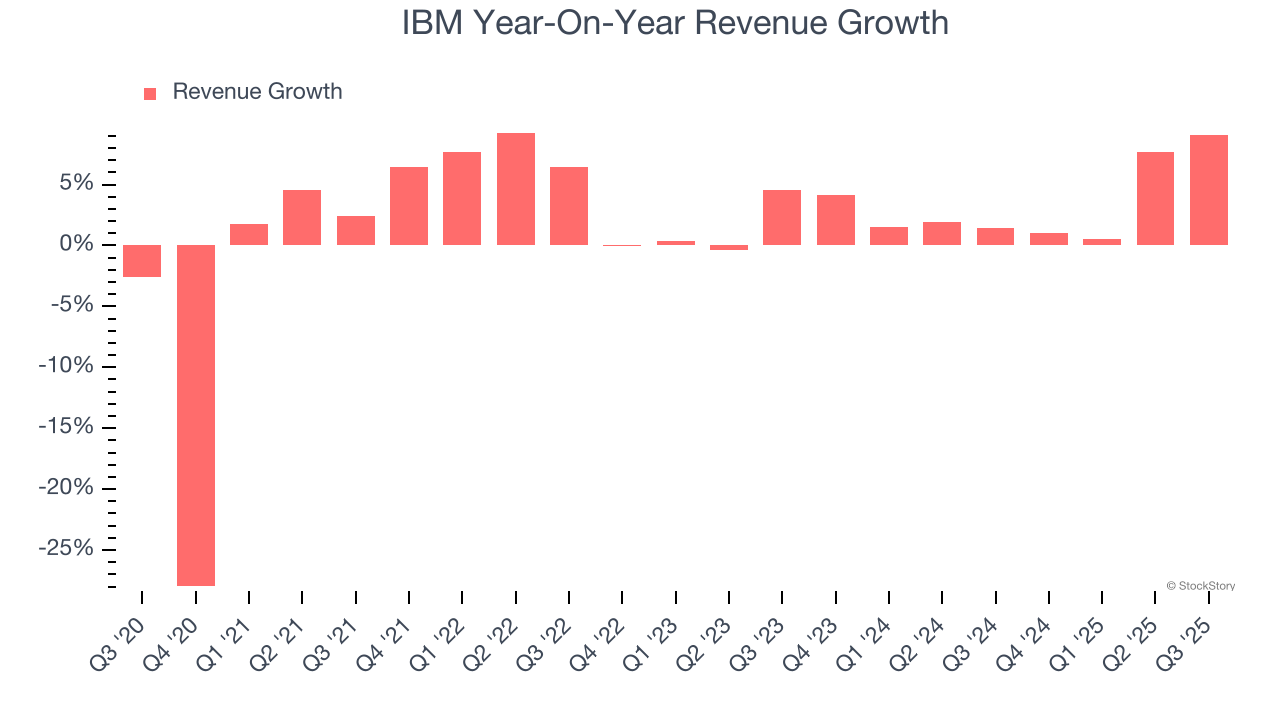
IBM also breaks out the revenue for its most important segment, Software. Over the last two years, IBM’s Software revenue averaged 8% year-on-year growth. This segment has outperformed its total sales during the same period, lifting the company’s performance. 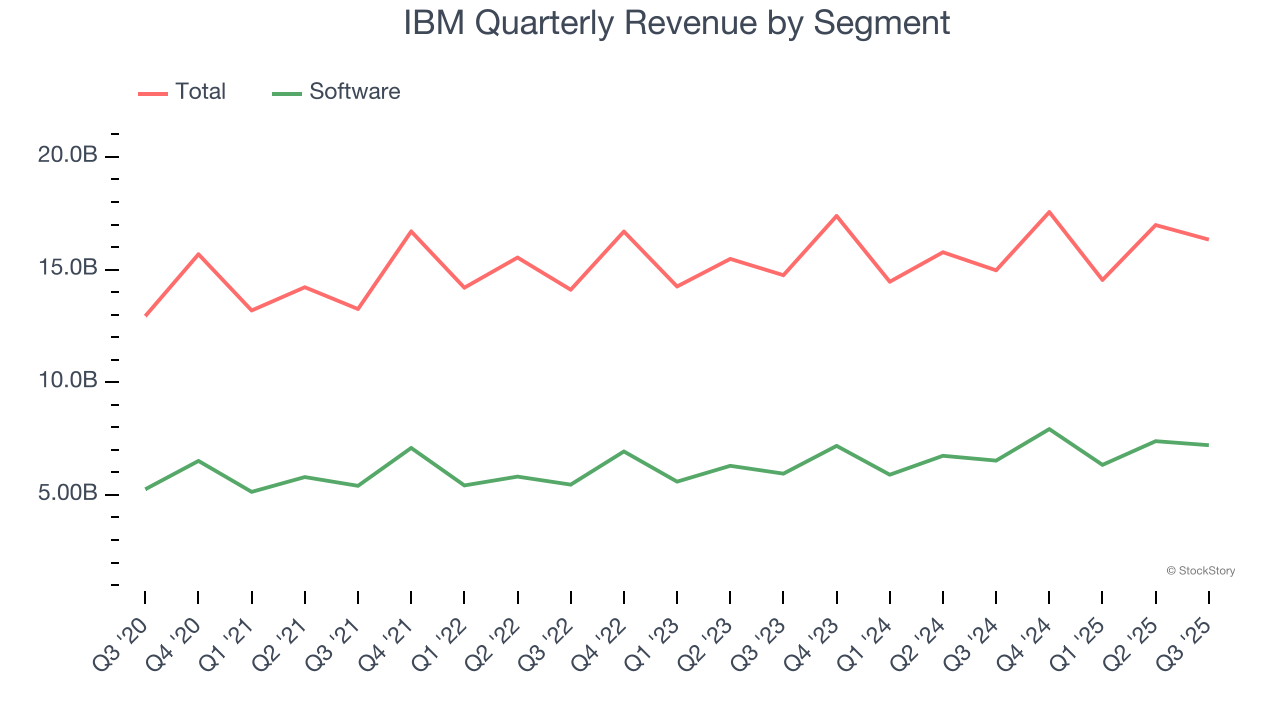
This quarter, IBM reported year-on-year revenue growth of 9.1%, and its $16.33 billion of revenue exceeded Wall Street’s estimates by 1.4%.
Looking ahead, sell-side analysts expect revenue to grow 5.7% over the next 12 months, an improvement versus the last two years. This projection is above average for the sector and suggests its newer products and services will spur better top-line performance.
Today’s young investors won’t have read the timeless lessons in Gorilla Game: Picking Winners In High Technology because it was written more than 20 years ago when Microsoft and Apple were first establishing their supremacy. But if we apply the same principles, then enterprise software stocks leveraging their own generative AI capabilities may well be the Gorillas of the future. So, in that spirit, we are excited to present our Special Free Report on a profitable, fast-growing enterprise software stock that is already riding the automation wave and looking to catch the generative AI next.
Operating Margin
Operating margin is one of the best measures of profitability because it tells us how much money a company takes home after subtracting all core expenses, like marketing and R&D.
IBM has managed its cost base well over the last five years. It demonstrated solid profitability for a business services business, producing an average operating margin of 13.8%.
Analyzing the trend in its profitability, IBM’s operating margin rose by 7.2 percentage points over the last five years, as its sales growth gave it operating leverage.
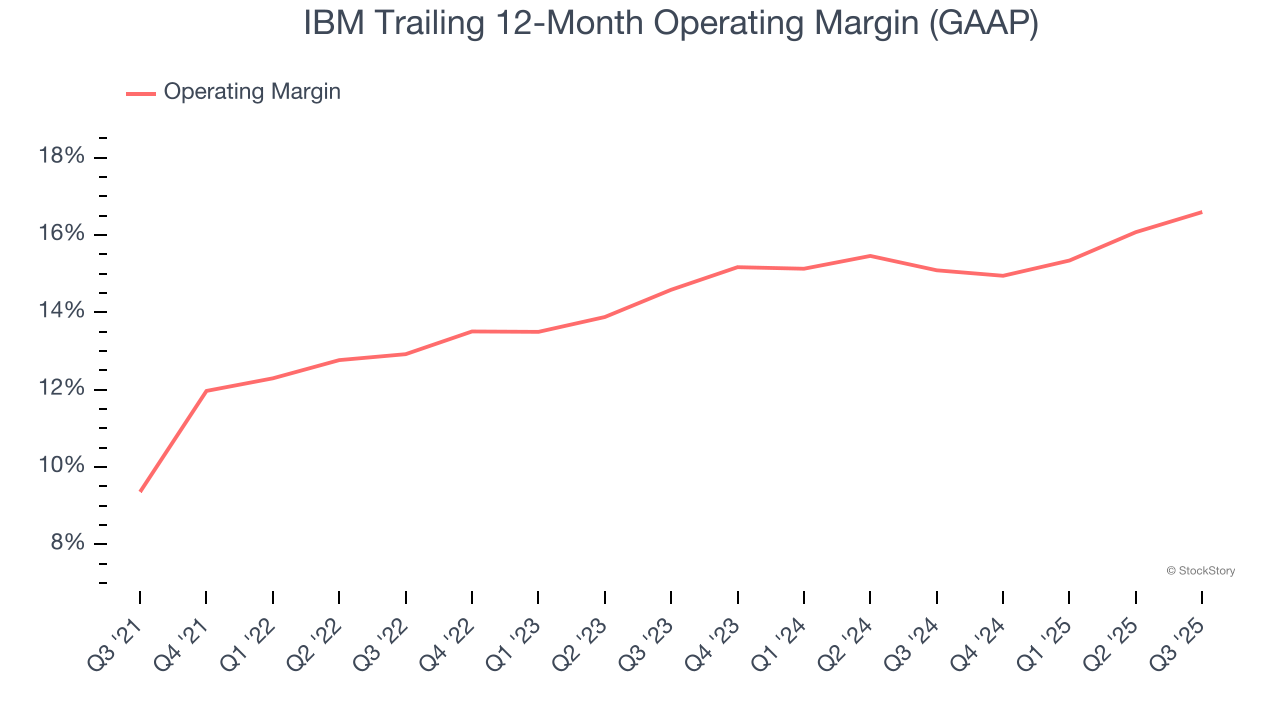
In Q3, IBM generated an operating margin profit margin of 14.9%, up 2.4 percentage points year on year. This increase was a welcome development and shows it was more efficient.
Earnings Per Share
We track the long-term change in earnings per share (EPS) for the same reason as long-term revenue growth. Compared to revenue, however, EPS highlights whether a company’s growth is profitable.
IBM’s EPS grew at an unimpressive 4.2% compounded annual growth rate over the last five years. On the bright side, this performance was better than its 1.3% annualized revenue growth and tells us the company became more profitable on a per-share basis as it expanded.
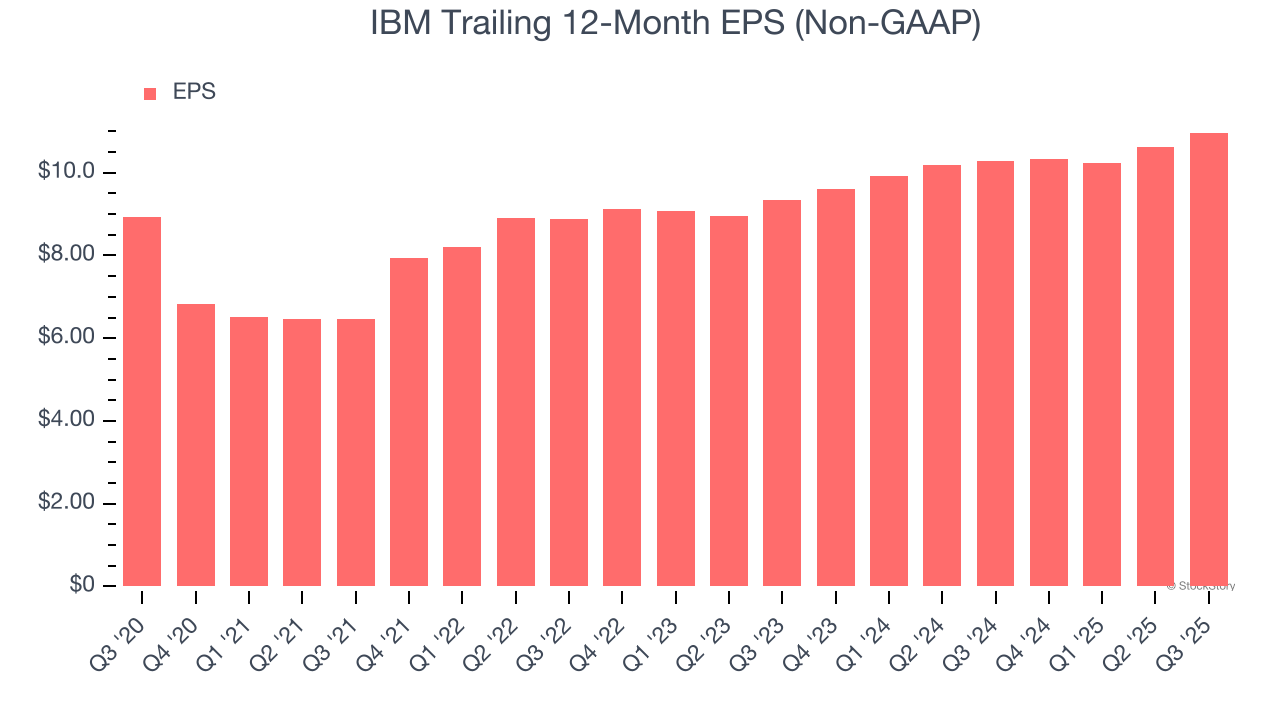
Diving into the nuances of IBM’s earnings can give us a better understanding of its performance. As we mentioned earlier, IBM’s operating margin expanded by 7.2 percentage points over the last five years. This was the most relevant factor (aside from the revenue impact) behind its higher earnings; interest expenses and taxes can also affect EPS but don’t tell us as much about a company’s fundamentals.
Like with revenue, we analyze EPS over a shorter period to see if we are missing a change in the business.
For IBM, its two-year annual EPS growth of 8.4% was higher than its five-year trend. Accelerating earnings growth is almost always an encouraging data point.
In Q3, IBM reported adjusted EPS of $2.65, up from $2.30 in the same quarter last year. This print beat analysts’ estimates by 8.3%. Over the next 12 months, Wall Street expects IBM’s full-year EPS of $10.97 to grow 8.6%.
Key Takeaways from IBM’s Q3 Results
It was good to see IBM beat analysts’ revenue and EPS expectations this quarter. The company also raised full-year revenue and free cash flow guidance. Overall, we think this was a decent quarter with some key metrics above expectations. The market seemed to be hoping for more, and the stock traded down 4.7% to $274.65 immediately after reporting.
Is IBM an attractive investment opportunity right now? When making that decision, it’s important to consider its valuation, business qualities, as well as what has happened in the latest quarter. We cover that in our actionable full research report which you can read here, it’s free for active Edge members.





